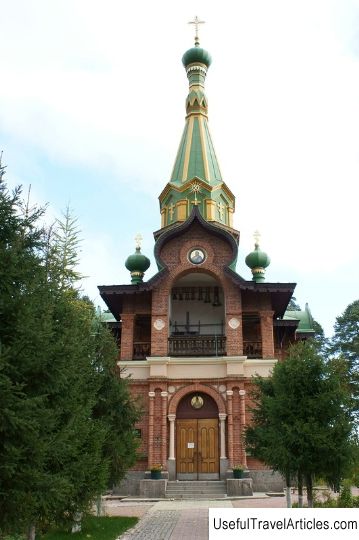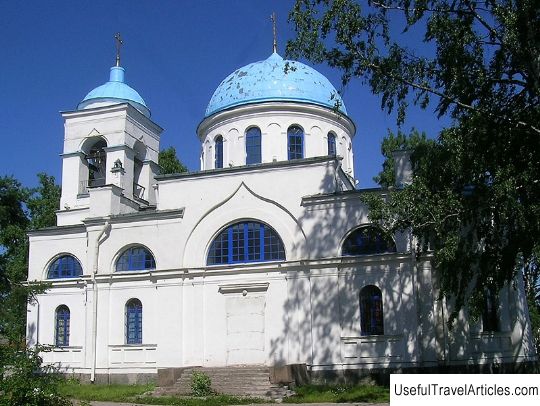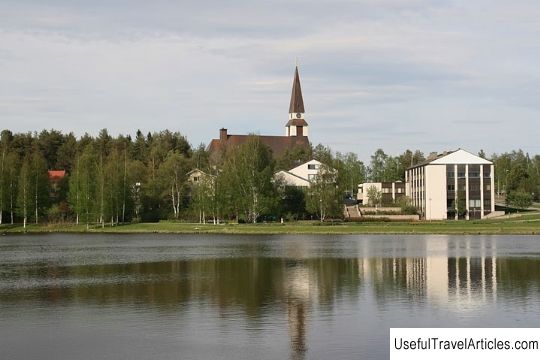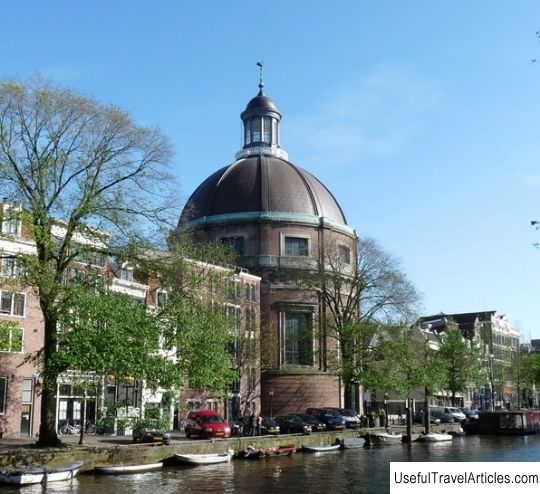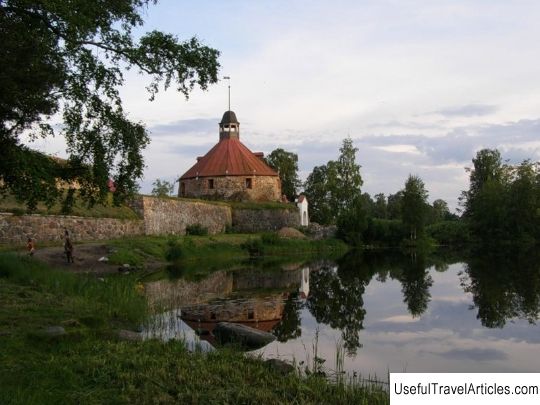Lutheran Church description and photo - Russia - Leningrad region: Priozersk
Rating: 8,8/10 (125 votes) 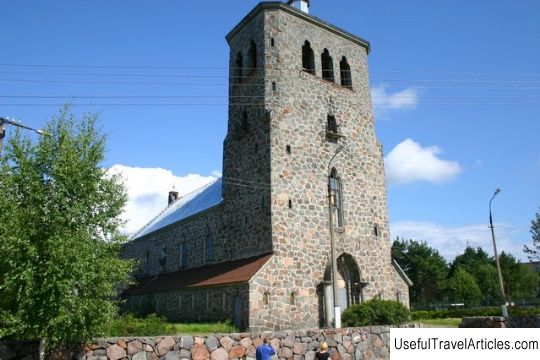
Lutheran Church description and photos - Russia - Leningrad region: Priozersk. Detailed information about the attraction. Description, photos and a map showing the nearest significant objects. Photo and descriptionThe first Lutheran church in Kexholm (now Priozersk) was built in 1581 by the Swedes. One by one, 10 Lutheran churches were built. Except for two, which were made of stone, they were all wooden, and they all burned down. The penultimate church was erected in 1759 by the famous Finnish architect Tuomas Suikkanen in honor of St. Andreas (Andrew the First-Called). After the Soviet-Finnish war, residents used it as a salt barn, and in August 1941, retreating, set it on fire. Today the dormitory building of the boarding school is located at this place. The nearby stone church was also damaged during the war, but already in peacetime its building was used as a cultural center, which also burned down today. At the end of the 19th century, most of the inhabitants of Kexholm were Lutheran Finns. The Orthodox parish had two stone churches: the Church of All Saints in the cemetery and the Nativity Cathedral. Lutherans is a rather dilapidated church of St. Andreas. At the beginning of the 20th century, the first projects of the temple were developed. But the costs for them turned out to be too high. As a result, in 1921 it was decided to offer the Orthodox parish to sell the Cathedral of the Nativity of the Virgin to the Lutherans. But the Lutherans were refused. In 1923, the command of the Savoian Jaeger Regiment, which was stationed on the territory of the New Fortress, proposed to the Lutheran parish to adapt a stone powerful building of the Swedish arsenal, which was preserved on the territory of the Old Fortress, for the church. It was proposed to use its walls for the construction of the temple. But it was required to spend 200 thousand marks on the reconstruction of the old building and its subsequent reconstruction. And this proposal was rejected due to the remoteness of the site for the church from the city and the small size of the building. On July 15, 1928, a project for a large stone building was ordered. It was taken up by the Helsinki architect, professor at the Polytechnic Institute AE Lindgren, who is rightfully considered the most outstanding master of Finnish neo-romanticism, who worked in the style of "Northern Art Nouveau". The church, according to Lindgren's plan, with its gray walls reaching upward, was supposed to resemble the Old Fortress-Detinets. The money for the construction in the form of loans was taken from government agencies, insurance companies, banks. Lindgren never saw his last work (he died on October 3, 1929). The construction was completed by his daughter H. Lindgren. Arthur Kullman was responsible for the interior design. The platform in front of the temple and the entrance to the building were laid out in stone by master Adolf Laitinen from Antrea (today Kamennogorsk, Vyborgsky district). From the old church of 1759 to the new one were transferred: the altar painting "Crucifixion" by B. Godenhjelmin, candelabra made in the 1870s at the expense of the philanthropist A. Andreeva. Two bronze bells were raised on the new church. One was cast in Russia in 1877, the other in Germany in 1897. On December 14, 1930, the Lutheran Church was consecrated by the Bishop of Vyborg, Doctor of Theology Erkki Kaila. In 1934, the figures of four evangelists in full height were installed in the niches of the church pulpit by the sculptor Albin Kaasinen. In 1937 a new organ was installed, designed by Veni Kuosma and made in the city of Kangasala at the organ factory. The last services were held in the early days of the Soviet-Finnish war. During the bombing, the building suffered significant damage. After Kexholm became part of the Karelo-Finnish SSR, the building was taken over by the NKVD. Having returned Kakisalmi for a while, the Finns restored their church. But without finishing work, in 1944 they left the city. After the war, the building of the church was used as a city house of culture. The cross was thrown off, but at the same time it broke through the roof and damaged some of the rafters. In 1961, the building was renovated and refurbished. In 1987, the building of the church was repaired again: the sewage system was updated, finishing works were carried out. In 1995, a resident of Priozersk, V. Petushkov, adopted the Lutheran faith and was ordained a pastor. He formed a small community around him. In the summer of 1995, visiting pastors held several services at the church. And after 2 years, a granite monument was erected by the design of Kauko Kokko at the western wall of the temple building, where the military burial of the remains of Finnish residents was once located. The Lutheran Church, which is the symbol of Priozersk, has always attracted guests. During the day, one could climb a long staircase of 49 steps to the exhibition hall in the belvedere, where you can see the handicrafts of local craftsmen of decorative and applied arts.           We also recommend reading Planetarium Negara description and photos - Malaysia: Kuala Lumpur Topic: Lutheran Church description and photo - Russia - Leningrad region: Priozersk. |
